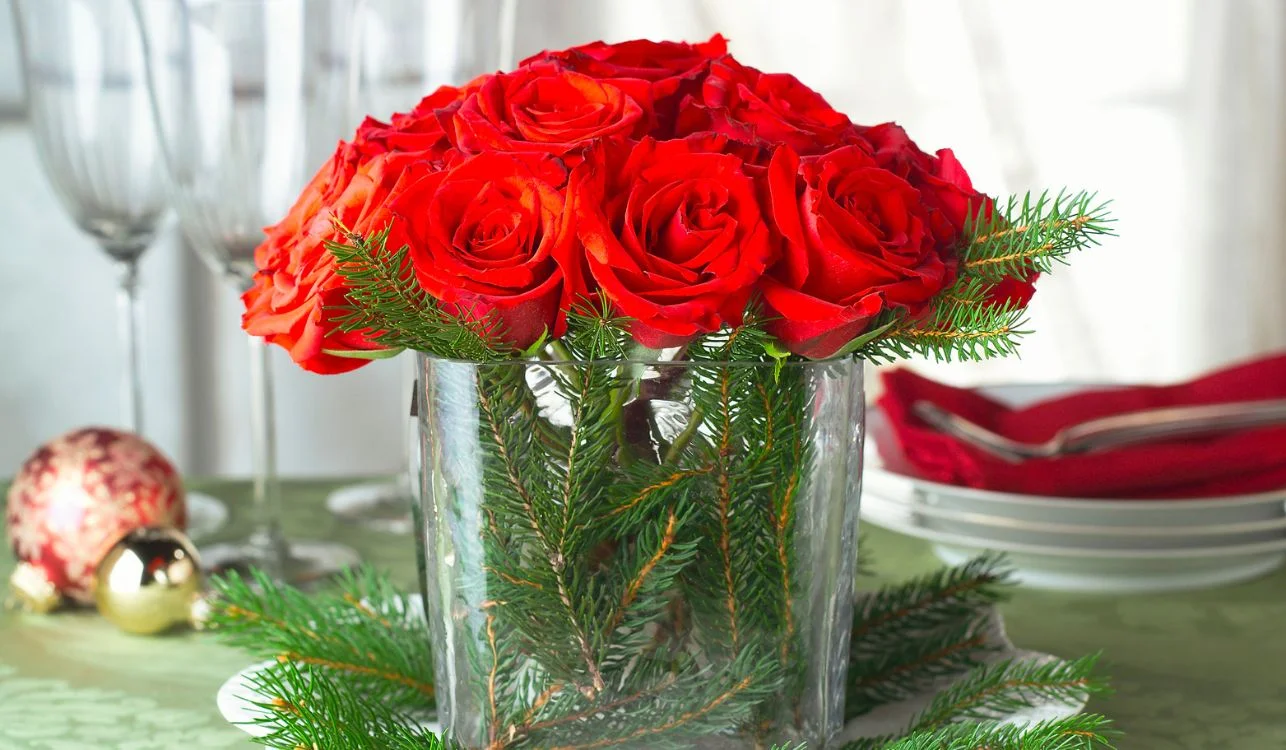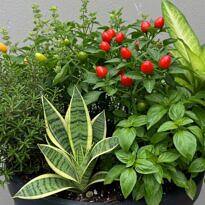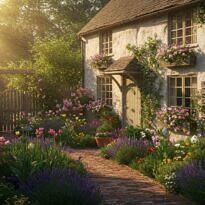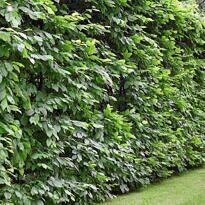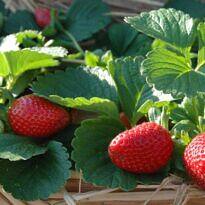The world of ornamental plants is filled with colors and shapes that can transform your garden into a truly enchanting place. In this article, we will explore 40 red-flowering plants that not only add beauty but also attract wildlife and provide an amazing environment for you to enjoy.
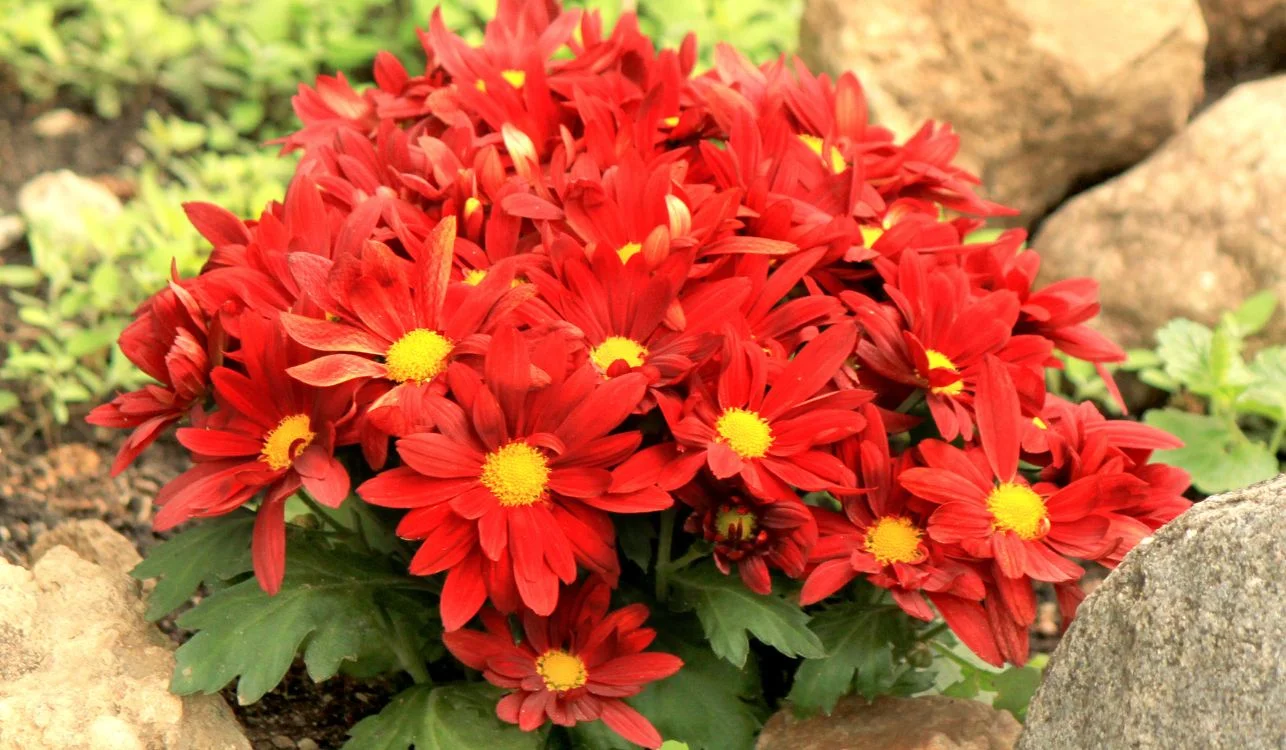
But before we embark on our journey to discover all these different flowers, how about understanding a bit about the power of red in the garden and in flower decoration?
Meaning and Symbolism of the Color Red:
Did you know that red is a color filled with emotions and symbolism?
It is often associated with passion, love, courage, and energy. In the context of nature, red can also be interpreted as a sign of vitality and vigor. Red flowers often represent love and desire, making them popular choices for both passionate bouquets and romantic-themed gardens.
However, red can also symbolize intensity, danger, and alertness. In botanical terms, red flowers often serve as an invitation to pollinators such as hummingbirds and butterflies, which are attracted to this vibrant color. On the other hand, red berries are often seen as potentially poisonous. So caution is advised.
Combining Red Flowers in the Garden:
By using the color wheel, we can create harmonious color combinations in a garden that is centered around the use of the color red. A popular approach is to use analogous colors, those that are close on the color wheel. For example, orange and pink can be great choices as they are close to red and create a smooth transition. This can be done by incorporating plants with flowers of these colors near the red-flowered plants. When you add yellow and orange, the effect is that of a fiery garden with warm colors. Combined with pink, the effect is softer and more romantic.
Another interesting option is the use of complementary colors. In the case of red, green is the complementary color. This means that lush green foliage plants, such as shrubs or grasses, can further highlight the red flowers. Combining red with different shades of green creates a vivid and balanced contrast.
Additionally, using softer shades like white can soften the impact of red and add a touch of elegance to the garden. White is a neutral color that allows red to shine brightly. It’s easy to see how this combination works well by observing Christmas decorations, which often use white, green, and red.
It’s important to remember that the proportion of each color in the garden is crucial. Red can be a dominant color, but it shouldn’t overpower the space completely. Mixing in other colors and textures creates visual interest and balance.
Color Combinations with Red:
- Red and White: This combination is classic and timeless. White softens the impact of red and creates an elegant balance. It’s a popular choice in interior design and fashion.
- Red and Pink: These are colors that together evoke romantic love. Pink is analogous to red, bringing delicacy to this strong color.
- Red and Orange: Like pink, orange is analogous to red, blending perfectly with this color. However, orange elicits different emotions, such as enthusiasm, joy, and confidence.
- Red and Black: This combination conveys a sense of sophistication and mystery. Black complements red, creating a striking contrast.
- Red and Gold: Gold adds a touch of luxury to the color palette. This combination is often used in party decorations, arrangements, bouquets, and special events.
- Red and Green: This combination is classic in the context of Christmas, evoking the joy and celebration of the season. Choose plants that bloom during Christmas for an incredible effect in the garden.
- Red and Yellow: This combination is warm, vibrant, and energetic, evoking a sense of joy and optimism.
- Red and Gray: Gray softens the impact of red, creating a contemporary and balanced environment. In the garden, gray can come in as a background wall or through gray-foliaged plants to provide contrast with the red.
The color red is rich in meaning and versatility. Its ability to evoke strong emotions makes it a popular choice not only in the garden and decor but also in design, fashion, and art. Combining red with other colors can create a variety of visual effects and convey different messages. By understanding the meaning of red and its combinations, you can create an environment that not only pleases aesthetically but also conveys specific emotions and feelings. So, explore the countless possibilities that red offers and create a garden that tells its own story.
Speaking of history, red flowers have intrigued humanity throughout history, playing significant roles in various cultures and contexts. A notable example highlighting the cultural influence of red flowers is the story of the Queen of Hearts in Lewis Carroll’s famous tale “Alice in Wonderland.”
In Carroll’s work, the Queen of Hearts is an iconic character who demonstrates an almost obsessive fixation on red roses. She orders her white roses to be painted red, leading to the famous phrase, “Paint the roses red!” This story, to some extent, reflects the symbolism and cultural impact of red flowers.
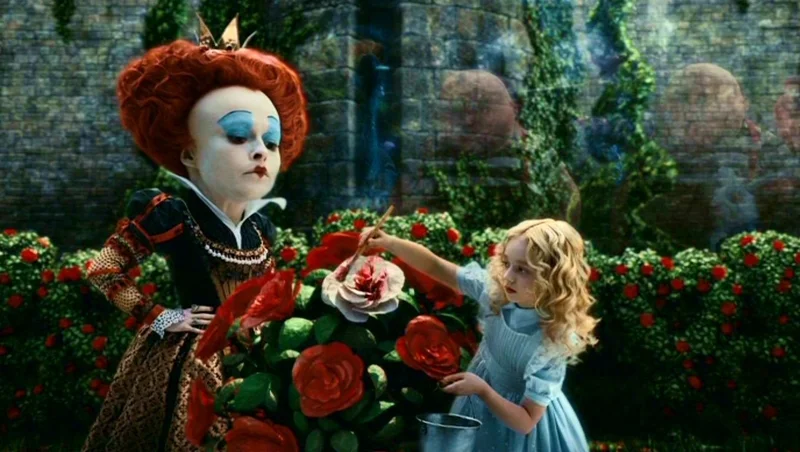
Red roses have historically been associated with love, passion, and desire. The use of red roses as a romantic gift is a tradition that dates back centuries. In Western culture, the red rose is a symbol of deep and passionate love, often given on special occasions such as Valentine’s Day.
In some Asian cultures, such as Chinese culture, red is an auspicious color symbolizing good luck and happiness. Therefore, red flowers like peonies and red chrysanthemums are often used in weddings and important celebrations.
Besides literature, red flowers are also present in other forms of culture, such as art, in works by Van Gogh and Claude Monet, and in religion. Two notable religious figures associated with red flowers are Saint Rita of Cascia in Catholicism and Pomba Gira in Umbanda and Candomblé.
Thus, red flowers play an intriguing role in human culture and history, representing a wide range of emotions and meanings, from romantic love to devotion, power, and authority.
Now that we understand the impact of this color, let’s explore 40 red-flowering plants that not only add beauty but also attract wildlife and provide an amazing garden for you to enjoy.
1. Rose (Rosa spp.)

The roses are iconic flowers appreciated for their elegance and fragrance. Available in a wide range of shades of red, roses are popular in gardens and landscapes, adding romance and beauty. They are ideal for beds, borders, and pots, creating a charming atmosphere. To care for them, provide well-drained soil and regular watering. Annual pruning is essential to stimulate healthy growth and abundant flowering.
2. Lily (Lilium spp.)

Lilies are known for their stunning and elegant flowers. Red varieties add passion and sophistication to the garden. Planted in groups or as focal points, red lilies create impressive focal points. They thrive in full sun and well-drained soil. Remember to remove faded flowers to extend the blooming period.
3. Pansy (Viola x wittrockiana)

The pansy is a compact annual plant with small but charming flowers. Its red varieties are perfect for borders and pots. They bloom for most of the year and are cold-resistant. Make sure to keep the soil moist and deadhead the flowers to stimulate continuous growth.
4. Dahlia (Dahlia spp.)

Dahlias offer spectacular flowers in various shades of red. You can choose plants of different sizes for various purposes in the garden. They prefer full sun and well-drained soil. Pruning faded flowers and protecting against strong winds are essential for proper care. You can propagate them from seeds or by dividing the tuberous roots.
5. Tulip (Tulipa spp.)

Red tulips are symbols of love and passion. They are excellent for beds, borders, and containers. Plant the bulbs in the fall for a burst of color in the spring. Ensure the soil has good drainage and that the tulips receive enough sunlight. Once they bloom, enjoy their beauty, but trim the stems after flowering to redirect energy back to the bulb.
6. Amaryllis (Hippeastrum spp.)

Amaryllis, also known as amaryllis, are appreciated for their spectacular trumpet-shaped flowers, ranging from vibrant red to pink, white, and other shades. They are ideal for gardens and pots, creating a dramatic and elegant look. To care for amaryllis, it’s important to provide adequate sunlight, well-drained soil, and moderate watering. After flowering, you can store the bulbs for them to bloom again.
7. Camellia (Camellia japonica)

The Camellia is a plant with lush green foliage and red, white, or pink flowers. It is appreciated for its winter to early spring blooming. Camellias are ideal as ornamental shrubs and are great for creating hedges. They thrive in partial shade, acidic soil, and regular watering.
8. Turk’s Cap (Malvaviscus arboreus)

The Turk’s Cap, with its funnel-shaped red flowers, is a charming plant to attract hummingbirds and butterflies. It is ideal for hedges and as an informal shrub, adding color and life to the garden. Turk’s Cap prefers direct to partial sunlight and well-drained soil. Maintenance is relatively simple, with light pruning to promote healthy growth or shaping for hedge formation.
9. Lantana (Lantana camara)

The Lantana is a perennial plant that produces inflorescences in shades of red, orange, yellow, and pink. It is an excellent choice for flower beds and borders, attracting butterflies. Lantana thrives in full sun and well-drained soil. It is hardy and easy to maintain, requiring occasional pruning to stimulate continuous blooming.
10. Pinks (Dianthus spp.)

Pinks are appreciated for their red, pink, or white flowers, often with a sweet fragrance. They are great for borders, pots, and rocky gardens. Pinks thrive in full sun and well-drained soil, requiring regular watering. They are resilient and long-lasting plants.
11. Calliandra (Calliandra tweedii)

The Calliandra, with its delicate pom-pom-shaped red flowers, is a remarkable plant for attracting hummingbirds to the garden. Its compact and lush bush makes it ideal for borders or as a standalone plant in sunny areas. It blooms for most of the year and requires regular watering, preferring well-drained soil. Pruning after flowering helps maintain its shape and stimulate new blooms.
12. Geranium (Pelargonium spp.)

Scarlet Sage is an herbaceous plant that captivates with its erect spikes of bright red flowers. This species is widely appreciated in gardens due to its long flowering season and its attraction to hummingbirds. It is an excellent choice for flower beds, borders, and pots. To keep it healthy, provide well-drained soil and regular watering. In addition, deadheading faded flowers will extend the flowering period.
32. Impatiens (Impatiens walleriana)

The red flowers of the Impatiens are an irresistible attraction for gardeners. This annual plant produces a profusion of flowers, making it perfect for flower beds, pots, and shaded gardens. It is easy to grow but requires moist soil and partial shade. The ‘Sunpatiens’ cultivar is suitable for sunny areas. Keep the soil consistently moist for continuous and vibrant flowering.
33. Cockscomb (Celosia argentea)

The Cockscomb impresses with its plume-like inflorescences in shades of red. This annual plant is often used to add height and texture to flower beds and floral arrangements. It thrives in full sun and well-drained soils and tolerates dry conditions. Pruning faded flowers stimulates prolonged and lush flowering.
34. Tiger Flower (Tigridia pavonia)

Tigridia pavonia, known as the Tiger Flower, displays red flowers with distinctive markings, resembling a tiger’s skin. This bulbous plant is ideal for summer gardens. Its ephemeral flowers, lasting only one day, are a unique and surprising addition. Plant the bulbs in well-drained soil and provide regular watering during the growth period. Dividing the bulbs every few years helps maintain the vigorous Tiger Flower in your garden.
35. Ornamental Quince (Chaenomeles speciosa)

The Ornamental Quince is a plant that delights with its bright red flowers in the spring. This low-maintenance shrub is appreciated for its hardiness and is often used in borders and as ground cover. Its flowers attract pollinators, making it a standout in the garden. Make sure to plant it in well-drained soil with access to sunlight. Light pruning after flowering can help maintain its shape. Furthermore, its small fruits are edible and can be used to make preserves.
36. Verbena (Verbena hybrida)

The Verbena is an annual plant that produces an abundance of red flowers. It is a popular choice for mass plantings and flower beds due to its compact growth habit and vibrant blossoms. This plant is valued for attracting butterflies and bees to the garden. It is heat and drought-resistant, making it low maintenance. Ensure well-drained soil and regular watering. Deadheading the faded flowers encourages continuous blooming throughout the season.
37. Nasturtium (Tropaeolum majus)

The Nasturtium is a versatile annual plant with bright red flowers that are also edible. Its attractive flowers and shield-shaped leaves make it ideal for borders and flower beds. It is known for attracting beneficial insects to the garden. Nasturtium thrives in full to partial sun and moderately fertile soil. Its flowers and leaves have a peppery taste and are used in salads. In addition to its culinary properties, this plant helps control pests in the garden.
38. Dwarf Marigold (Tagetes patula)

The Dwarf Marigold, also known as the French Marigold, is a low-growing annual plant with vibrant red flowers. Its flowers resemble daisies and are often used for borders and flower beds. In addition to its beauty, the Dwarf Marigold is known for repelling garden pests, making it a popular choice for organic gardens. To care for this plant, provide well-drained soil and moderate watering, avoiding overwatering.
39. Cape Jewels (Nemesia strumosa)

The Cape Jewels is an annual plant that produces small red flowers with a sweet and pleasant aroma. It is ideal for pots, borders, and rock gardens. Cape Jewels is appreciated for its compact nature and abundant blooming. For optimal performance, cultivate it in well-drained soil and provide full sun or partial shade.
40. Snapdragon (Antirrhinum majus)

The Snapdragon is a popular annual plant named for the shape of its flowers, which resemble an open mouth. They come in various colors, including red, and are great for borders and flower beds. To care for snapdragons, provide fertile, well-drained soil and regular watering. They thrive in full sun.
Now that we know these 40 red-flowered plants, it’s important to remember that the selection of plants should take into account the conditions of your garden, such as soil type, sun exposure, and the climate of your region. Furthermore, it’s essential to properly care for the plants to keep them healthy and beautiful.
But do you know what gives flowers their red color?
The red color of flowers is often caused by pigments called anthocyanins. We can give a little help to the plants by providing the necessary nutrients for the formation of these pigments, as we will see next:
How to Enhance the Red Color in Your Garden’s Flowers:
Certainly, enhancing the red color of flowers is an admirable goal when growing ornamental plants. In addition to essential care, such as pruning and watering, proper fertilization plays a fundamental role in this process, providing the necessary nutrients to promote more vibrant and healthy flowers. Here are some tips on how to fertilize plants to enhance the red color of the flowers:
1. Choose the Right Fertilizer:
To intensify the red color of flowers, it’s important to choose a balanced fertilizer that contains essential macro and micronutrients. Look for a fertilizer rich in phosphorus, potassium, and magnesium, as these nutrients are known to promote more abundant flowering with vivid and durable colors.
2. Apply at the Right Time:
Fertilization should be done at the appropriate time. In general, it’s advisable to fertilize at the beginning of the growing season, in spring, and, if necessary, repeat every 4-6 weeks during the active growth season.
3. Follow the Label Instructions:
Each fertilizer has specific application instructions on the label. Follow them carefully to avoid over or under-fertilization, which can harm the plant. When in doubt, use slow-release fertilizer, which gradually nourishes the plant, reducing the risk of burning them.
4. Avoid Excess Nitrogen:
Nitrogen is essential for healthy plant growth, but an excess of it can stimulate vegetative growth at the expense of flowering. Therefore, avoid fertilizers with high nitrogen content when trying to intensify the flower’s color, especially in the pre-flowering period.
5. Use Organic Fertilizers:
Organic fertilizers, such as compost, well-rotted manure, and bone meal, can be a healthy choice to promote flower color gradually and sustainably. They also improve soil structure.
6. Monitor and Adjust:
Observe the plant’s response to fertilization. If you notice that the flower’s color is not intensifying as desired, you can adjust the frequency and amount of fertilizer applied according to the specific needs of the plant. Changes in soil pH can alter the flower color in some species, so pay attention to this factor and the needs of the species you’ve chosen for your garden.
7. Water Properly:
Proper watering is crucial for nutrient absorption by the root system. Make sure the plants are well-hydrated before and after applying fertilizer.
Remember that the secret to more vibrant red flowers lies not only in fertilization but also in maintaining a healthy and balanced environment for the plants. Regular nutrient supply, proper exposure to sunlight, pest and disease control, and attention to the specific needs of each species are essential practices to enhance the red color of flowers in your garden. With care and patience, you can enjoy stunning red flowers that will truly enchant your garden.
And don’t be afraid to pick your beautiful garden flowers for a stunning arrangement inside your home. Flowers should be within our sight, appreciated, and given to our loved ones. Create a spectacular centerpiece and treat your family and friends to this breathtaking visual on the dining table.
